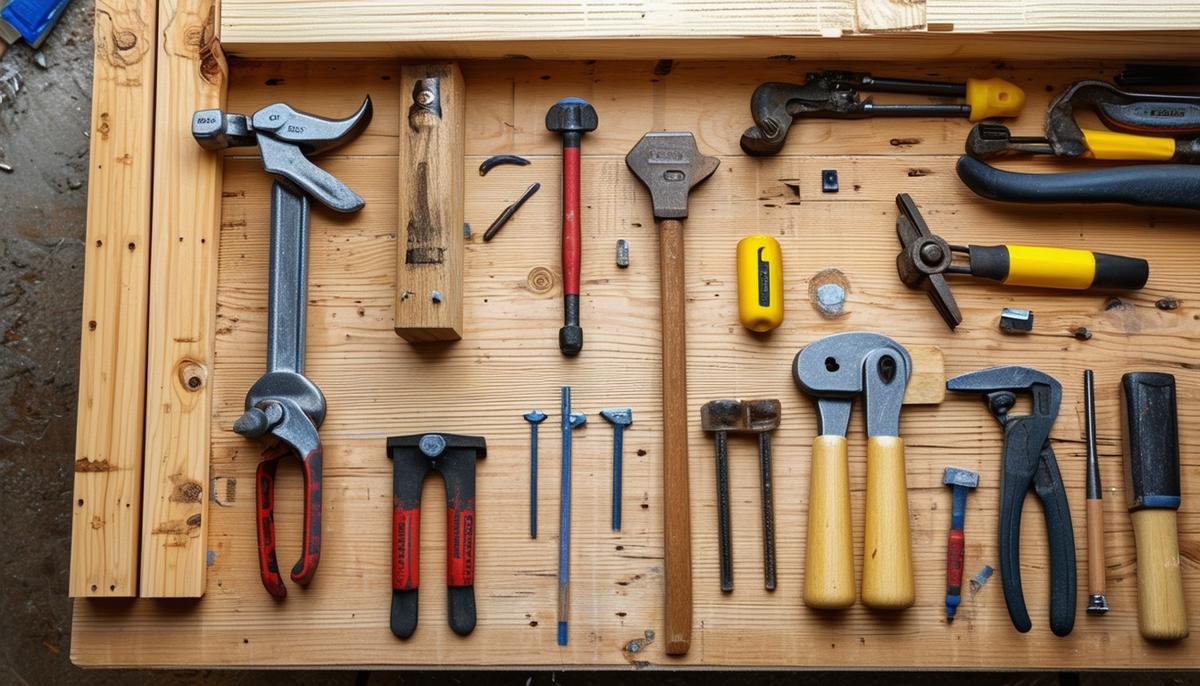Assessing Joist Condition
Uneven floors, bouncy spots, and musty odors can indicate problems with your floor joists. Here are key signs to watch for:
Uneven Floors
Sloping floors often hint at warped, twisted, or cracked joists. You might notice doors sticking or walls cracking. This affects your home's structural integrity.
Bouncy Spots
Floors that feel springy underfoot suggest weakened joists, potentially due to rot or damage. This can lead to more severe structural issues if left unaddressed.
Musty Odors
Persistent musty smells may indicate mold or decay in the joists, weakening the wood fibers and compromising support.
Crawl Space Checks
Inspect your crawl space for sagging beam ends, rot, or insect damage. These issues can spread quickly if not dealt with promptly.
Rot and Moisture
Look for darkened, soggy wood in damp areas like crawl spaces and basements. Even small spots of rot can expand over time.
Insect Infestations
Signs of wood-eating insects include tiny holes, sawdust piles, or crumbly beams. Treatment may stop further damage, but replacement might be necessary.
Foundation Issues
Foundation problems can stress joists, causing shifts and cracks. Check for signs of settling or instability in structural columns.
Load Considerations
Heavy items can strain joists beyond their capacity, potentially causing cracks or compression. Assess whether loads exceed design limits, especially in older buildings.
Upstairs Symptoms
Issues like buckling walls or cracks in drywall upstairs can point to joist problems below. These signs shouldn't be ignored.
Repair Options
While temporary fixes like bracing or shimming can help, addressing the root cause by replacing compromised joists is often the best long-term solution.
Regular assessment of these factors can help you catch and address joist issues before they become major problems.

Gathering Supplies
Proper preparation is key for floor joist repairs. Here's what you'll need:
Lumber
Floor joists typically use 2 x 6, 2 x 8, 2 x 10, or 2 x 12 boards. Southern Yellow Pine and Douglas Fir are preferred for their strength. Inspect for defects like knots or warping.
Hardware
- Joist hangers
- Structural screws (3-inch lag screws recommended)
- Construction adhesive
Tools
- Framing hammer
- Circular saw
- Oscillating saw
- Reciprocating saw (optional)
- Hydraulic jack (bottle jack for tight spaces)
- 4-foot level
- Tape measure
- Impact driver
Safety Gear
- Safety glasses
- Dust mask
Additional Items
- Wood shims
- Concrete block or sturdy platform (for soft soil)
- Extra wood blocks or notched lumber for temporary supports
Organize all materials before starting to ensure a smooth workflow. With the right supplies on hand, you'll be well-prepared to tackle your joist repair project efficiently and safely.

Sistering Joists
Sistering joists involves fastening a new joist alongside a damaged one to reinforce the floor structure. Here's how to do it:
- Measure the length of the damaged joist. Ideally, the sister should span the entire length.
- Cut the new joist to size, using Southern Yellow Pine or Douglas Fir for strength.
- Clear obstacles like wires or pipes, ensuring power and water are off.
- Apply construction adhesive along the old joist's face.
- Position the new joist alongside the old one. Use a hydraulic jack to raise any sagging sections (no more than 1/8-inch per day).
- Clamp the joists together and secure with structural screws spaced 12-16 inches apart.
- Add joist hangers at each end for extra support.
- For obstructions, use shorter joist sections (scabbing) overlapping the damaged area.
- Fill gaps with wood shims, securing with adhesive and screws.
- Replace any removed electrical or plumbing components.
This method effectively reinforces your floor's structural integrity, even in tight spaces. Take your time and follow these steps for a professional-quality repair.

Jacking Up Joists
Jacking up sagging joists requires care and precision. Here's how to do it safely:
- Use a hydraulic bottle jack with sufficient capacity (6-ton is common).
- Create a stable base with a concrete block or solid plank.
- Position the jack under the sagging point, not at the joist's end.
- Place a heavy-duty post between the jack and joist to distribute force.
- Lift gradually, no more than 1/8-inch per day, checking with a level.
- For multiple sagging joists, use additional jacks and lift evenly.
- Secure lifted joists with temporary supports like wood shims or blocks.
- Stop immediately if you encounter resistance or hear cracking.
- Use additional supports (temporary beams or adjustable steel columns) for safety.
- Once level, secure the sister joist and attach joist hangers.
- Remove temporary supports and reattach any relocated utilities.
Remember, patience is key. Take your time to avoid causing additional structural issues. With careful execution, you'll have a solid, level floor once again.
"Properly jacking up joists is a slow process. Rushing can lead to further damage or compromise the structural integrity of your home."

- Simpson Strong-Tie. Joist Hanger and Framing Connector Guide. Simpson Strong-Tie Company Inc.; 2021.
- United States Department of Agriculture. Wood Handbook: Wood as an Engineering Material. Forest Products Laboratory; 2010.
- International Code Council. International Residential Code for One- and Two-Family Dwellings. ICC; 2021.
